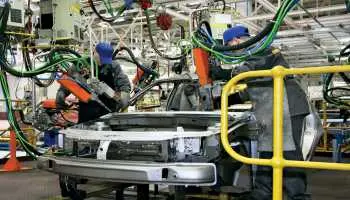
Europe Polycarbonate Sheets Market Share, Trends, Revenue, Key Players, Growth Drivers, Challenges and Future Investment Opportunities Till 2033: SPER Market Research
Category :
Chemical & Materials
Published: Dec-2024
Author: SPER Analysis Team
Europe Polycarbonate Sheets Market Share, Trends, Revenue, Key Players, Growth Drivers, Challenges and Future Investment Opportunities Till 2033: SPER Market Research
Europe Polycarbonate Sheets Market is projected to be worth USD XX million by 2033 and is anticipated to surge at a CAGR of 3.78%.
High-performance, multipurpose thermoplastics, polycarbonate sheets are renowned for their resilience to impact, transparency, and durability. Polycarbonate sheets are lightweight and extremely robust, providing up to 250 times greater impact resistance than glass. They are made from a polymer produced from bisphenol A and phosgene. These sheets can be transparent or frosted and come in a variety of thicknesses, colors, and finishes, making them appropriate for a broad range of uses. Because polycarbonate can tolerate extreme weather, UV rays, and physical strain, it is frequently utilized in sectors like building, automotive, electronics, and signage.
Europe Polycarbonate Sheets Market Driving Factors and Challenges
Drivers: The market for polycarbonate sheets in Europe is expanding due to a number of important factors, including rising demand from a variety of industries, including electronics, automotive, and construction. Polycarbonate sheets are preferred in the construction industry due to their energy-efficient, lightweight, and long-lasting qualities, which make them perfect for facades, skylights, and roofing in both residential and commercial buildings. Because polycarbonate offers superior insulation and natural light transmission, its use is also being accelerated by the drive for ecological and energy-efficient materials. The demand for polycarbonate sheets in automotive glazing and interior applications has increased due to the automobile industry's requirement for lightweight materials to increase fuel efficiency and lower emissions.
Request For Free Sample Report @ https://www.sperresearch.com/report-store/europe-polycarbonate-sheets-market.aspx?sample=1
Challenges: There are a number of obstacles facing the European polycarbonate sheet market that could hinder its expansion. Price fluctuations for raw materials, especially those of bisphenol A (BPA), a big ingredient in the production of polycarbonate, are one of the main challenges. These price swings have the potential to impede market expansion by raising manufacturing costs, which could then be passed on to customers. The market is also impacted by environmental concerns over the use of BPA in the production of polycarbonate, as well as growing regulatory demand for more environmentally friendly materials and procedures. Alternative materials have been developed as a result, although producers may find the switch to these materials to be complicated and expensive.
Impact of COVID-19 on Europe Polycarbonate Sheets Market
The COVID-19 pandemic had a large effect on the European polycarbonate sheet market by disrupting several industries that use polycarbonate sheets extensively, including construction, automotive, and manufacturing. Early in the pandemic, extensive lockdowns, a decline in construction activity, and halted production lines caused the market for polycarbonate sheets to stall. Supply chains were impacted by shortages of raw materials, transportation delays, and the temporary closure of manufacturing facilities.
Europe Polycarbonate Sheets Market Key Players:
The market study provides market data by competitive landscape, revenue analysis, market segments and detailed analysis of key market players are; SABIC, Palram Industries Ltd., Arla Plast, EXOLON GROUP, Onduline, 3A Composites GmbH, Danpal, Brett Martin, Corplex, Palram Industries Ltd., Isik Plastik, NUDEC, S.A., Carboplak, GI PLAST, PLAZIT-POLYGAL, Others.
For More Information about this Report @ https://www.sperresearch.com/report-store/europe-polycarbonate-sheets-market.aspx
Europe Polycarbonate Sheets Market Segmentation:
By Type: Based on the Type, Europe Polycarbonate Sheets Market is segmented as; Solid, Corrugated, Multi-walled
By End User: Based on the End User, Europe Polycarbonate Sheets Market is segmented as; Construction, Aerospace, Auotmotive, Agriculture, Electrical and Electronics, Others.
By Region: This research also includes data for France, Germany, Italy, Spain, United Kingdom, Rest of Europe.
This study also encompasses various drivers and restraining factors of this market for the forecast period. Various growth opportunities are also discussed in the report.
Would you like to view the sample pages?
Get Sample PagesExplore Related Reports
Domains Served
Our Global Clients
Our data-driven insights have influenced the strategy of 200+ reputed companies across the globe.




































